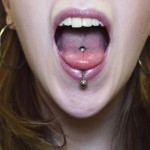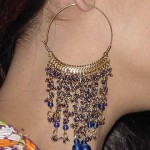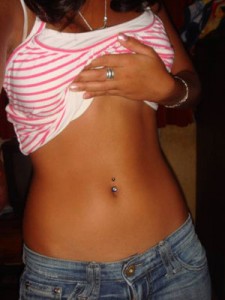All About Female Body Piercing For Jewelry
 Body piercing has become a latest fashion trend these days. Almost all parts of the body are pierced but don’t yield successful results always. Most piercing heals easily with little care and looks attractive.
Body piercing has become a latest fashion trend these days. Almost all parts of the body are pierced but don’t yield successful results always. Most piercing heals easily with little care and looks attractive.
Piercing would be successful in most places except where its difficult to protect the area during healing like the sole of the foot or where the tissue is very delicate like eyelid.
Piercing may not be everybody’s cup of tea. It would require the individual’s willingness to change a few of the daily activities or clothes during the healing period. Those with allergies should be cautious of piercing as it may affect the immune system. Those have health problems or planning to get pregnant should inform the piercer about it for him to decide on the materials, timing and methods of piercing.
Piercings are categorized into three: Soft tissue, Cartilage and Surface to surface.
Soft Tissue
The jewelry would appear on the opposite sides as the thickness will the same as the body segment like the earlobe. They heal easily without creating much problems. The piercing is usually done with ring and later any jewelry could be worn.
The dimensions of this piercing are minimum gauge: Head- 20g, Body- 14g, Genitals- 16g to 8g depending on piercing. Maximum gauge- None.
 Cartilage Piercing
Cartilage Piercing
The piercing done on nose and above the ear lobe comes under this. Cartilage is not stretchable. If the jewelry is not worn then the piercing will automatically close . Septum piercing is done with retainer which fits inside the nose. Others are done using a ring.
The dimensions of this piercing are minimum gauge: Nostril & Ear- 20g, Septum- 14g, Maximum according to piercing.
Surface To Surface
They take almost a year to heal as piercing is done on the same plane like the throat. It requires lots of care while healing. They are done using ring or bar.
The dimensions of this piercing are minimum gauge: Head- 20g, Others 16g-14g. Maximum according to the location and piercing, but normally 14-10g.
Thimbles of 12g can be used too but the piercing should be one gauge more than the thimble to accommodate the flared ends.
Common Reasons For Piercing:
- Just to attract attention to certain portion of the body
- Reinforce ethic roots of the individual
- Memberships to particular group or to raise voice against some rules of the society
- To remind birth or death
Precautions And Aftercare:
 Piercing have been happening from ancient times and has been increasingly gaining popularity. But in the rush to get pierced to keep up with the trend, people should not forget the following safety precautions:
Piercing have been happening from ancient times and has been increasingly gaining popularity. But in the rush to get pierced to keep up with the trend, people should not forget the following safety precautions:
- Only get piercing done through trained and experienced piercer
- Don’t get pierced through ear-piercing gun or cheap ear studs
- Ensure the piercer uses only hollow needles, sterilized forceps, and latex gloves and adheres to other safety precautions to prevent infection and diseases.
- Get proper rest before piercing or at least a balanced meal 2-4 hours before the piercing.
- Understand the procedure involved before consenting for piercing
- Update the piercer of the health conditions if needed
- Obtain, read and adhere to the aftercare instructions booklet. Clarify if there are any doubts
- Remove and replace the jewelry as instructed and not before the time.
When To Ask For Medical Help:
If any complication arises after the piercing, immediate medical help should be called for. The common reasons for asking for medical help are:
1.. Jewelry pulls out splitting the skin
2.. Piercing gets infected and doesn’t get better even with proper care
3.. Infection in the nostril or septum piercing. These could turn fatal if not treated properly.
Last not the least, remember to replace the pierced jewelry with surgical grade stainless steel or 14k or higher caret yellow gold or niobium/titanium.